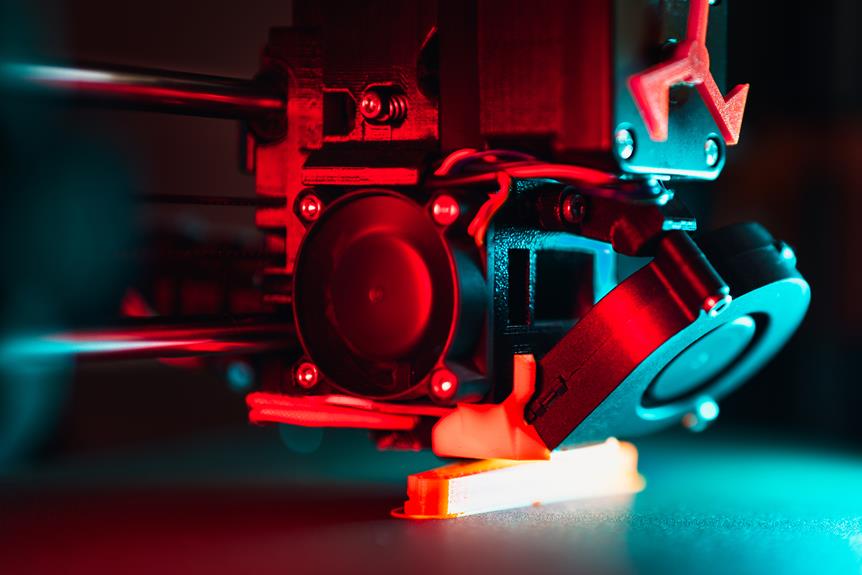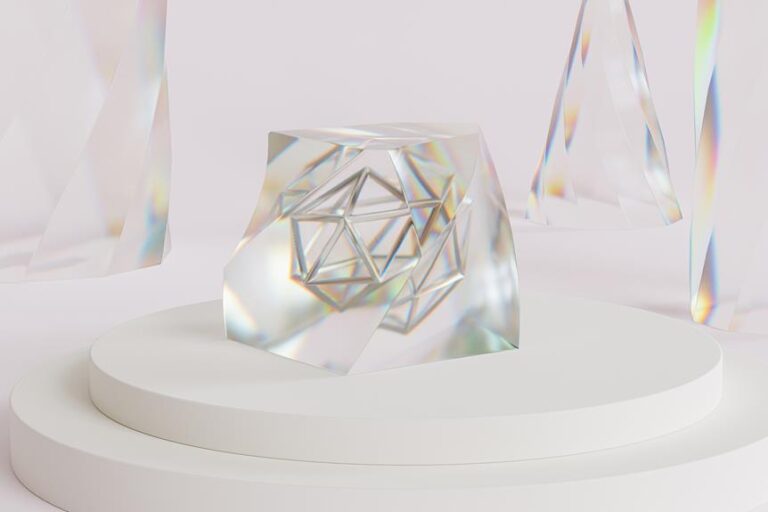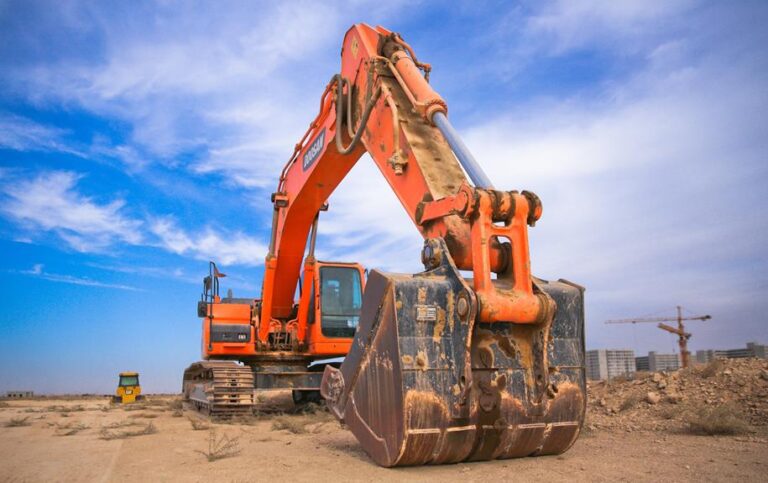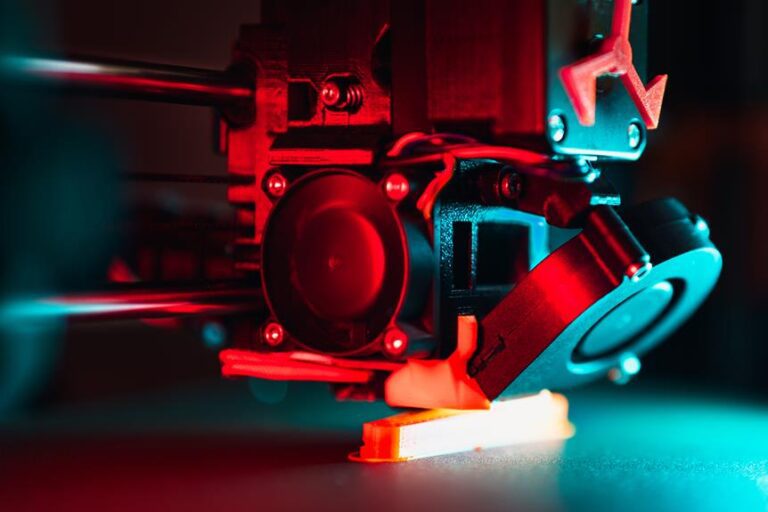Exploring 3D Printer Nozzles and Extruders for Better Prints
Are you tired of subpar 3D prints? Look no further!
In this article, we will delve into the world of 3D printer nozzles and extruders, uncovering the secrets to achieving impeccable prints.
From understanding the importance of nozzle size to exploring different types of nozzle materials, we leave no stone unturned.
With precise technical details and expert insights, we aim to liberate you from the shackles of mediocre prints and empower you to unleash your creativity with confidence.
Key Takeaways
- Nozzle size and material choice significantly impact the level of detail and accuracy in 3D prints.
- Direct drive extruders offer improved print quality and are suitable for a wide range of filament materials, including multi-material printing.
- Cooling solutions are crucial for maintaining print quality and preventing filament sagging or deforming during printing.
- Regular maintenance and troubleshooting, including cleaning and lubrication of nozzle and extruder components, are essential for preventing and addressing common issues such as clogged nozzles and inconsistent filament flow.
Understanding the Importance of Nozzle Size
To fully comprehend the significance of nozzle size, it is imperative to delve into its impact on the quality and precision of 3D prints. The nozzle size of a 3D printer plays a crucial role in determining the level of detail and accuracy that can be achieved. Smaller nozzle sizes, such as 0.4mm or even 0.2mm, allow for finer details and intricate designs to be printed with greater precision. On the other hand, larger nozzle sizes, such as 0.6mm or 0.8mm, are better suited for faster and more robust prints that require less precision.
The nozzle size affects the layer height and the extrusion width, which in turn impacts the overall print quality. A smaller nozzle size allows for thinner layers, resulting in smoother prints with finer details. However, it also requires more time to complete the print due to the increased number of layers. Conversely, a larger nozzle size enables faster printing by extruding a larger amount of filament at once, but sacrifices some level of detail.
In addition to the nozzle size, cooling solutions for 3D printers are also essential tools for maintaining print quality. Proper cooling prevents filament from sagging or deforming during printing, resulting in cleaner and more accurate prints.
Understanding the significance of nozzle size and considering cooling solutions are crucial aspects of achieving high-quality and precise 3D prints. In the subsequent section, we will explore different types of nozzle materials and their impact on print quality.
Different Types of Nozzle Materials
Examining the various types of nozzle materials provides valuable insights into their suitability for achieving optimal print quality and performance. The choice of nozzle material plays a crucial role in determining the overall printing experience and the final output of 3D prints. Nozzles can be made from various materials, including brass, stainless steel, hardened steel, and ruby.
Brass nozzles are commonly used due to their affordability and good thermal conductivity. They work well with PLA filament and are suitable for general-purpose printing.
Stainless steel nozzles are more durable and resistant to wear, making them a good choice for abrasive filaments like carbon fiber or metal-filled materials.
Hardened steel nozzles are even more durable and can withstand higher temperatures, making them ideal for printing with abrasive filaments that contain glass or ceramic particles.
Ruby nozzles, on the other hand, offer exceptional wear resistance and are the best choice for printing with extremely abrasive materials, such as carbon fiber or glow-in-the-dark filaments. They are also more resistant to clogging, resulting in smoother and more consistent prints.
Exploring Direct Drive Extruders
Direct drive extruders, commonly referred to as the most popular type of extruder, offer a number of advantages for 3D printing. These extruders are directly attached to the hot end of the 3D printer, eliminating the need for a separate feeding mechanism. This direct connection allows for more precise control over the filament, resulting in higher quality prints.
Here are four key advantages of direct drive extruders:
- Improved print quality: With the filament path being shorter and more direct, there is reduced filament resistance and improved responsiveness to changes in printing speed and direction. This leads to better overall print quality, especially for intricate and detailed designs.
- Better filament compatibility: Direct drive extruders can handle a wide range of filament materials, including flexible and abrasive ones. The close proximity between the extruder and the hot end allows for better control and smoother extrusion of these challenging filaments.
- Enhanced support for multi-material printing: Direct drive extruders excel in multi-material printing. The ability to quickly retract and extrude filament allows for seamless transitions between different materials, enabling the creation of complex and multi-colored prints.
- Easy maintenance and troubleshooting: Since the extruder is located closer to the print head, it is easier to access and clean. This makes maintenance and troubleshooting simpler, reducing downtime and ensuring a more efficient printing process.
Bowden Vs. Direct Drive Extruders: Pros and Cons
Significantly, comparing Bowden and Direct Drive extruders allows for a comprehensive examination of their respective pros and cons in the context of 3D printing. Bowden extruders, which have a separate motor mounted away from the print head, offer benefits such as reduced weight on the print head, resulting in faster and smoother movements. However, they also have drawbacks, including increased filament retractions and a potential loss of precision due to the inherent flexibility of the filament path.
On the other hand, Direct Drive extruders, where the motor is directly attached to the print head, provide advantages such as better control over the filament flow, which is particularly advantageous when printing flexible materials. Additionally, Direct Drive extruders allow for easier filament changes and are generally more reliable when printing with different types of filaments. However, they also tend to be heavier, which can lead to slower print speeds and potential artifacts on the print surface.
To further illustrate the pros and cons of these two extruder types, the table below provides a summary:
| Bowden Extruders | Direct Drive Extruders | |
|---|---|---|
| Pros | – Reduced weight on the print head | – Better control over filament flow |
| – Faster and smoother movements | – Easier filament changes | |
| Cons | – Increased filament retractions | – Heavier, potentially leading to slower print speeds |
| – Potential loss of precision due to filament path flexibility | – Potential artifacts on print surface due to weight | |
| – More reliable with different types of filaments, especially flexible materials |
Optimizing Extruder Temperature for Improved Prints
Occasionally, adjusting the extruder temperature can lead to improved prints by optimizing the flow and adhesion of the filament. When it comes to optimizing extruder temperature, there are several factors to consider:
- Material Compatibility: Different filaments require different extruder temperatures for optimal performance. Adjusting the temperature can ensure that the filament melts consistently and adheres properly to the build plate.
- Print Speed: Higher print speeds may require higher extruder temperatures to ensure that the filament is melted and deposited quickly enough. Lower temperatures may result in under-extrusion and poor layer adhesion.
- Layer Height: Thicker layers may require higher extruder temperatures to ensure proper bonding between layers. Lower temperatures may lead to weak layer adhesion and an increased risk of delamination.
- Bed Temperature: Adjusting the extruder temperature can also be necessary when optimizing the bed temperature. Increasing the extruder temperature can compensate for a lower bed temperature, helping to promote better adhesion between the filament and the build plate.
By carefully considering these factors and experimenting with different extruder temperature settings, users can achieve improved prints with better surface quality, structural integrity, and overall print success.
It is essential to keep in mind that optimizing the extruder temperature is a delicate balance, and fine-tuning may be required to achieve the desired results.
Upgrading Your Printer's Stock Extruder
Enhance the performance of your 3D printer by upgrading the stock extruder with a high-quality aftermarket option. The stock extruder that comes with most 3D printers may not always meet the demands of advanced printing projects. By replacing it with an aftermarket extruder, you can unlock a range of benefits such as improved print quality, increased printing speed, and enhanced reliability.
When choosing an aftermarket extruder, there are several factors to consider. These include the material compatibility, filament diameter, and ease of installation. To help you make an informed decision, here is a comparison table of three popular aftermarket extruders:
| Extruder Model | Material Compatibility | Filament Diameter | Installation Difficulty |
|---|---|---|---|
| Extruder A | PLA, ABS, PETG | 1.75mm, 3mm | Moderate |
| Extruder B | PLA, TPU | 1.75mm | Easy |
| Extruder C | PLA, ABS, Nylon | 1.75mm, 2.85mm | Difficult |
Exploring Dual Extrusion Printers
One of the key advancements in 3D printing technology is the availability of dual extrusion printers. These printers allow for the simultaneous use of two different materials or colors during the printing process. Dual extrusion printers offer a range of benefits and possibilities for users who desire greater freedom in their designs.
- Enhanced Versatility: With dual extrusion printers, you can print objects with multiple materials. This includes combining rigid and flexible filaments to create functional prototypes or mixing different colors to achieve more visually appealing prints.
- Support Material: Dual extrusion printers enable the use of dissolvable support materials. This means that complex, overhanging, or intricate designs can be printed with ease. After printing, the support material can be dissolved away, leaving behind a clean and detailed final product.
- Time Efficiency: By using two extruders simultaneously, dual extrusion printers can significantly reduce print times. This is especially useful for large-scale or complex prints, as the printer can work on multiple parts of the object simultaneously.
- Design Freedom: Dual extrusion printers allow for the creation of multi-material or multi-color prints with intricate designs. This opens up a world of possibilities for artists, designers, and engineers who want to push the boundaries of their creativity.
With the availability of dual extrusion printers, users can now achieve more complex, versatile, and visually stunning prints. They can explore new design possibilities and bring their ideas to life with greater ease and efficiency.
Choosing the Right Nozzle Diameter for Your Prints
Determining the optimal nozzle diameter is a critical factor in achieving high-quality and precise 3D prints. The nozzle diameter directly affects the amount of filament that can be extruded, which in turn affects the print speed, surface quality, and overall print accuracy. Choosing the right nozzle diameter requires considering various factors, including the desired level of detail, print speed, and the type of filament being used.
In general, smaller nozzle diameters produce finer details and better surface quality, but at the expense of longer print times. Larger nozzle diameters, on the other hand, allow for faster printing but may sacrifice some level of detail. When selecting a nozzle diameter, it is important to match it with the intended purpose of the print.
For intricate models or objects with fine details, a nozzle diameter of 0.2mm or smaller is recommended. This will allow for precise extrusion and intricate designs. However, the print time will be significantly longer compared to larger nozzle sizes.
For general-purpose printing, a nozzle diameter of 0.4mm is commonly used. This size strikes a balance between print speed and detail, making it suitable for a wide range of applications.
In cases where printing speed is a priority, larger nozzle diameters such as 0.6mm or 0.8mm can be used. These sizes allow for faster extrusion rates, resulting in quicker prints but with reduced detail.
Ultimately, the choice of nozzle diameter depends on the specific requirements of the print job. By considering factors such as desired detail, print speed, and filament type, users can select the most appropriate nozzle diameter to achieve high-quality and precise 3D prints.
Troubleshooting Common Nozzle and Extruder Issues
To ensure smooth and uninterrupted 3D printing, it is important to identify and address common nozzle and extruder issues in a timely manner. These issues can hamper the overall print quality and lead to failed prints.
Here are some common nozzle and extruder issues that users may encounter:
- Clogging: When the nozzle gets clogged, it can cause inconsistent extrusion or complete blockage of filament flow. This can result from debris or filament residue accumulating in the nozzle, or using low-quality filament.
- Under extrusion: Under extrusion occurs when the extruder fails to push enough filament through the nozzle. This can be caused by a partially clogged nozzle, incorrect temperature settings, or a worn-out extruder gear.
- Over extrusion: Over extrusion is the opposite of under extrusion, where too much filament is pushed through the nozzle. This can happen due to incorrect extrusion multiplier settings, a faulty extruder stepper motor, or improper filament diameter calibration.
- Filament jams: Filament jams occur when the filament gets stuck in the extruder or the hot end. This can be caused by a misaligned or damaged extruder gear, improper tension in the filament feeder, or using a filament with inconsistent diameter.
Tips for Maintaining and Cleaning Nozzles and Extruders
When it comes to maintaining and cleaning nozzles and extruders, there are several important tips to keep in mind for optimal 3D printing performance. Regular maintenance and cleaning of these components can prevent clogs, improve print quality, and extend the lifespan of your 3D printer. Here are some essential tips to help you maintain and clean your nozzles and extruders:
| Tip | Description |
|---|---|
| Regular Inspection | Regularly inspect the nozzle and extruder for any signs of wear, damage, or buildup. Clean or replace as needed. |
| Filament Change | When changing filament, clean the nozzle by heating it up and manually removing any residue or clogs. |
| Cold Pull Method | Perform a cold pull to remove any stubborn filament residue. Heat the nozzle, insert a cleaning filament, and then quickly cool and remove it to pull out the residue. |
| Soaking in Solvent | Soak the nozzle in a suitable solvent, such as acetone or isopropyl alcohol, to dissolve and remove any stubborn buildup. |
| Regular Lubrication | Lubricate the extruder gears and other moving parts regularly to ensure smooth operation and prevent wear. |
Frequently Asked Questions
Can I Use Different Nozzle Sizes on the Same Print?
Yes, it is possible to use different nozzle sizes on the same print. This can provide various benefits such as increased print speed or improved detail. However, it may also require adjustments to parameters such as layer height and print speed.
What Is the Difference Between a Direct Drive Extruder and a Bowden Extruder?
A direct drive extruder is mounted directly on the print head, providing better control and accuracy, but adds weight. A bowden extruder is mounted remotely, reducing weight but sacrificing some precision.
How Can I Upgrade My Printer's Stock Extruder?
To upgrade a printer's stock extruder, one can consider various options such as replacing the current extruder with a higher-quality one, installing a direct drive extruder for better filament control, or upgrading to a dual extruder system for increased versatility.
What Are the Benefits of Using a Dual Extrusion Printer?
A dual extrusion printer offers several benefits, including the ability to print with multiple materials or colors simultaneously, increased printing speed, and the ability to create complex and intricate designs with support structures that can be easily removed.
How Often Should I Clean My Nozzle and Extruder?
Regular maintenance and cleaning of 3D printer nozzles and extruders is crucial for optimal performance and print quality. The frequency of cleaning depends on factors such as printing materials used and the volume of printing, but a general recommendation is to clean them every 100-200 hours of printing or whenever clogs or issues arise.
Conclusion
In conclusion, understanding the importance of nozzle size is crucial for achieving better 3D prints. By selecting the appropriate nozzle diameter, users can control the flow rate and resolution of the printed object.
Exploring different types of nozzle materials is another important aspect to consider. Nozzles are typically made of brass, stainless steel, or hardened steel. Each material has its advantages and disadvantages in terms of heat conductivity, wear resistance, and compatibility with different filaments.
Optimizing extruder temperature is also a crucial factor in obtaining high-quality prints. Different filaments require specific temperature ranges for proper extrusion. By adjusting the extruder temperature according to the filament's specifications, users can prevent issues like under-extrusion or overheating.
Additionally, considering the pros and cons of Bowden and direct drive extruders can further enhance the printing process. Bowden extruders offer faster print speeds but may result in slight inaccuracies due to the distance between the extruder and the nozzle. On the other hand, direct drive extruders provide better control over filament flow but may reduce the maximum achievable print speed.
Furthermore, the benefits of dual extrusion printers should also be taken into account. These printers allow users to print objects with multiple colors or materials, enabling the creation of more complex and visually appealing prints.
Choosing the right nozzle diameter and troubleshooting common nozzle and extruder issues are essential for obtaining high-quality prints. Clogs, jams, and inconsistent extrusion can be addressed by following proper cleaning and maintenance procedures.
Regular maintenance and cleaning of nozzles and extruders are necessary for optimal performance. This includes removing any debris or filament residue that may have accumulated and ensuring that the nozzle is free from any blockages.
By implementing these practices, users can achieve improved results in their 3D printing endeavors.









